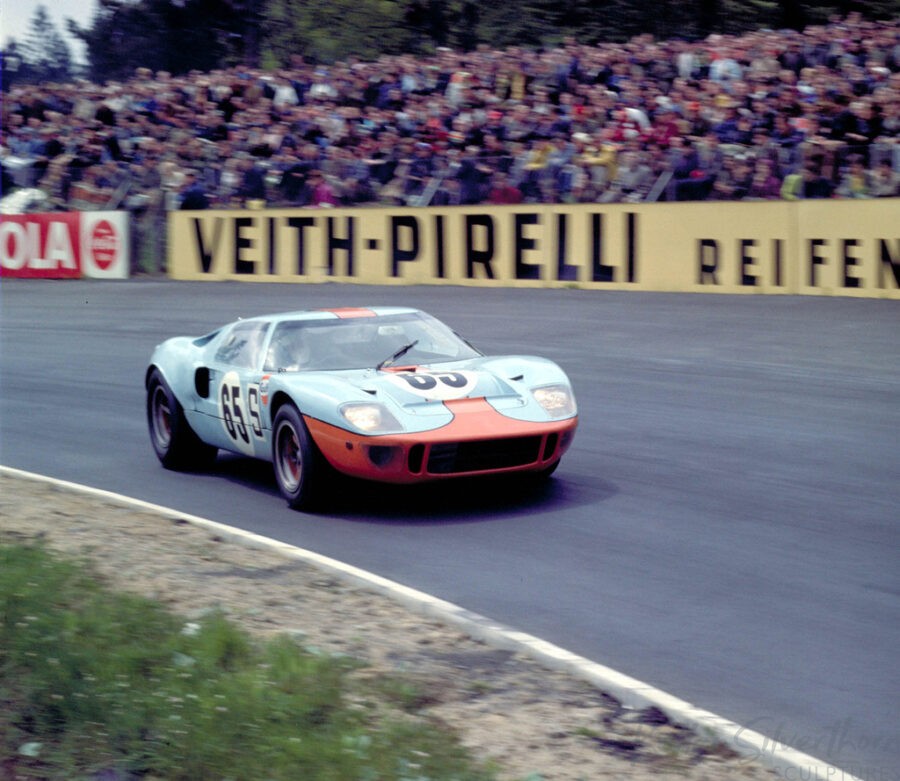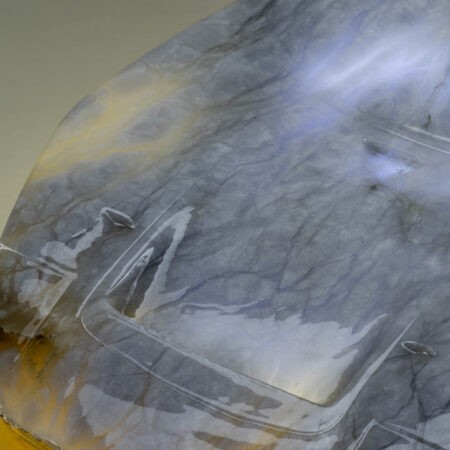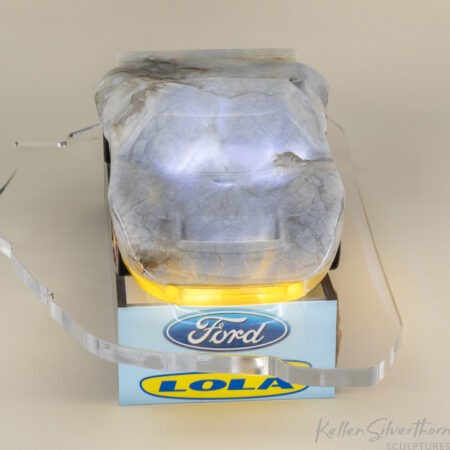Payback P-1075, inspired by the Ford GT Mk I of 1964-69
The 1963 Ford-Ferrari M & A pique led to the 1964-69 Ford GT family of endurance racing sports cars. Famously, versions of the GT won Le Mans outright in four consecutive years, 1966-69 — much to the chagrin of Ferrari and Porsche. The Total Performance Years at Ford (1962-70) continue to inspire Ford Enthusiasts and new Ford models today.
THE CAR
The GT’s saga starts with Ford Motor Company failing in its 1963 courtship with Ferrari. Both organizations harbored some resentments over the course of those negotiations. Henry Ford II responded by unleashing Dearborn’s might to thrash Enzo’s Scuderia on Ferrari’s turf at Le Mans. Ferrari had won Le Mans in 1949, 1954, 1958, as well as six times on the trot from 1960-65, (far eclipsing Jaguar’s five post-War Le Mans victories).

Photo Credit conceptcarz.com
To move Ford’s Le Mans quest forward quickly, Dearborn bought from Lola its Mk VI mid-engine prototype racer and design. That car was already powered by a Ford small-block V8. Lola designer Eric Broadley initially stayed involved in the now Ford-labeled, UK-based, GT project, as did UK-based Ford Advanced Vehicles.
However, Ford brought the GT project stateside when reliability issues sidelined the 1964 and 1965 Ford GT Mk I small-block V8 Le Mans efforts. Ford’s usual American motorsport partners Shelby, Holman-Moody, and Kar Kraft garnered bigger roles stateside. Hollywood was intrigued enough to produce the December 2019 film Ford v Ferrari.
The resulting big-block GT Mk II of 1966 and its follow-on aluminum honeycomb chassis J-Car (Mk IV) of 1967, scored Ford’s first two Le Mans victories. The FIA/ Le Mans organizers then banned the big-block engines, with 5.0 liters the new displacement limit for 1968. Having already proved its Le Mans point, Ford factory support for Le Mans style sports prototype racing then evaporated.

Photo Credit supercars.net
Privateer John Wyer Racing, sponsored by Gulf Oil, resurrected small-block Ford GT Mk I endurance racing efforts for 1968. The same Mk I chassis number P-1075 won outright for John Wyer Racing at both the 1968 and 1969 Le Mans events. The iconic GT40 Mk I shape and Gulf Oil colors are an evocative combination to a golden era for Le Mans enthusiasts. Of note, it has been more than 50 years since Ferrari’s last Le Mans outright victory of 1965, and four years less for Ford.

Photo Credit Quickworks / GT Spirit
THE STONE
Sourcing blue stone for sculpting is challenging. When a pale blue alabaster became available to me, I knew an exciting project would result. After sorting through many possible uses for this blue stone I settled on combining said alabaster with Orange Calcite in depicting a John Wyer Racing, Gulf Oil Livery race car. I choose the winning 1968-69 Ford GT Mark I that cemented John Wyer and Gulf Oil livery into enthusiasts’ minds of my generation.
While most stone used for sculpting is opaque, not so for alabaster and orange calcite — both of which are translucent. I couldn’t resist this rare opportunity to “under-light” the sculpture with wavelength specific output. Such lighting accents beautifully the color and translucency of both the alabaster and the calcite. The alabaster veining has a river delta-like pattern that the underlighting augments. Magical.
As you can imagine, getting the optimal under-lighting effect required numerous modifications to the under-surface of the sculpture, and extensive testing of various lights sources. Kudos to Talon Hartnell of McLaren Lighting here in Victoria for his patience and expertise in achieving these special effects.









